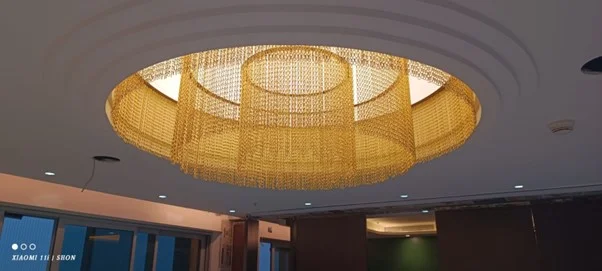What Is Architectural Decorative Mesh?
Architectural decorative mesh is an innovative material used in modern architecture and design, combining functionality with aesthetic appeal. Typically made from metals such as stainless steel, aluminum, or copper, as well as synthetic materials, this mesh comes in various patterns, textures, and finishes. Its versatility allows architects and designers to create stunning visual effects while addressing practical needs such as ventilation and privacy.
Applications of Architectural Decorative Mesh
1. Building Facades
Decorative mesh is commonly used as cladding or screening for building exteriors. It enhances the visual interest of facades while allowing for airflow and natural light. This combination of beauty and functionality helps structures stand out in urban environments.
2. Interior Design
Inside buildings, decorative mesh serves multiple purposes. It can be used as room dividers, wall coverings, or even ceiling elements, helping to define spaces while contributing to the overall aesthetic. The interplay of light and shadow through the mesh adds depth to interior designs.
3. Railings and Balustrades
In staircases and balconies, decorative mesh provides safety and support. Its unique patterns can complement various design styles, from contemporary to industrial, enhancing the overall look of a space.
4. Furniture Design
Many designers incorporate decorative mesh into furniture pieces, such as tables, chairs, and shelving units. This approach adds a modern flair and creates an interesting visual dynamic, making furniture both functional and stylish.
5. Lighting Fixtures
When used in lighting applications, decorative mesh can transform a simple light source into a stunning focal point. The mesh creates intricate shadows and effects, enhancing the ambiance of any room.
6. Landscaping Elements
In outdoor settings, decorative mesh can be used for privacy screens, fencing, or trellises. It blends functionality with beauty, making outdoor spaces feel more inviting while maintaining privacy.
7. Privacy Solutions
In densely populated areas, decorative mesh provides a stylish solution for privacy. It allows light and air to pass through while blocking unwanted views, making it ideal for balconies, patios, and gardens.
Benefits of Architectural Decorative Mesh
Architectural decorative mesh offers several benefits:
Versatility: Easily customizable to meet diverse design needs.
Durability: Many materials are resistant to weather and wear, ensuring long-lasting performance.
Lightweight: Compared to solid materials, decorative mesh is easier to handle and install.
Sustainability: Often made from recyclable materials, it supports eco-friendly design practices.
Conclusion
Architectural decorative mesh is more than just a functional material; it is a design element that enhances both the beauty and utility of spaces. With its wide range of applications in facades, interiors, furniture, and outdoor settings, it offers architects and designers the flexibility to innovate while addressing practical needs. Whether you’re looking to add a touch of elegance to a building or create a unique interior feature, decorative mesh is a versatile choice that can elevate any project.

